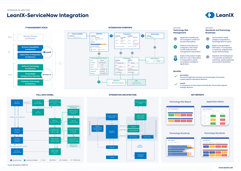Introduction
In an era where technology evolves at an unprecedented pace, the longevity and competitiveness of an organization's IT systems hinge on effective obsolescence risk management.
For IT leaders, enterprise architects, and decision-makers, staying ahead of technological advancements is not just about embracing the new but also about strategically phasing out the old.
Under the technology risk management umbrella, this guide serves as a comprehensive resource for understanding and implementing obsolescence risk management practices that ensure your technology stack remains robust, secure, and aligned with business objectives.
By addressing the lifecycle of your IT assets proactively, you can safeguard against the operational disruptions, increased costs, and security vulnerabilities that outdated technologies bring. Welcome to your roadmap for building a future-proof IT landscape.
What is obsolescence risk management?
Obsolescence risk management is the process of identifying, assessing, and mitigating the risks associated with outdated technology within an organization's IT landscape. It aims to ensure operational efficiency, reduce costs, and maintain business continuity by proactively managing the lifecycle of technology assets.
In a digital age where technology can become outdated almost as soon as it's implemented, obsolescence risk management is not just a strategy—it's a necessity for ensuring business resilience.
📚 Related: Obsolescence Risk Management Solution
A brief history
The concept of obsolescence risk management has evolved significantly over the years, keeping pace with the rapid advancements in technology. Initially focused on hardware and physical components, the scope has expanded to include software and digital assets, reflecting the changing dynamics of IT environments.
This shift underscores the increasing complexity of maintaining an up-to-date IT landscape, highlighting the importance of strategic planning and proactive management to avoid the pitfalls of technological obsolescence.
The importance
In today’s fast-paced digital landscape, the ability of an organization to remain competitive and efficient is significantly influenced by its approach to obsolescence risk management.

Image: Technology Lifecycle vs. Value & Risk
The relentless pace of technological advancement means that software and hardware can quickly become outdated, leading to a host of challenges that impact operational efficiency, security, and compliance.
Here’s why making obsolescence risk management a priority is not just wise but essential for businesses:
- Operational efficiency: Outdated technology can slow down operations, causing delays and inefficiencies that affect the bottom line. By managing obsolescence risk, organizations can ensure that their IT infrastructure supports, rather than hinders, business processes.
- Security and compliance: Technology that has reached its end-of-life often no longer receives updates or patches, leaving systems vulnerable to new threats. This not only poses a security risk but also compliance issues, as regulations often require up-to-date security measures.
- Cost management: While upgrading technology requires investment, the cost of maintaining obsolete systems can be significantly higher in the long run. Obsolescence risk management helps organizations plan and budget for upgrades, avoiding unexpected expenditures and optimizing resource allocation.
- Innovation and growth: An up-to-date technology stack is more adaptable and can easily integrate with new tools and systems, fostering innovation. By proactively managing obsolescence, organizations position themselves to leverage emerging technologies, driving growth and staying ahead of competitors.
📚 Related: The What Behind the Technology Obsolescence Management
The business impact of not managing obsolescence risk
Ignoring obsolescence risk can have dire consequences. From disrupted operations, reputation loss, and decreased productivity to heightened security vulnerabilities and compliance penalties, the impact extends across all facets of the business.
Moreover, the longer obsolescence is unaddressed, the more challenging and costly it becomes to implement necessary updates or replacements.
In essence, effective obsolescence risk management is not merely a protective measure but a strategic advantage that enables businesses to navigate the complexities of the digital age with confidence.
📚 Related: The Why Behind the Technology Obsolescence Management




/EN-Tech-Stacks-Poster_Resource_Page_Thumbnail.png?width=260&height=171&name=EN-Tech-Stacks-Poster_Resource_Page_Thumbnail.png)


